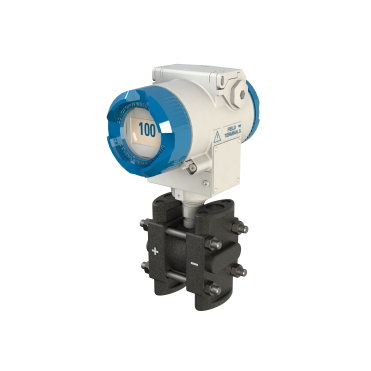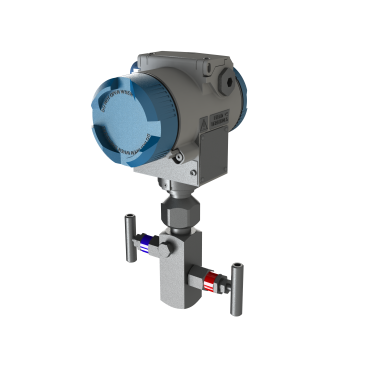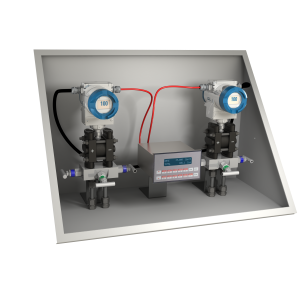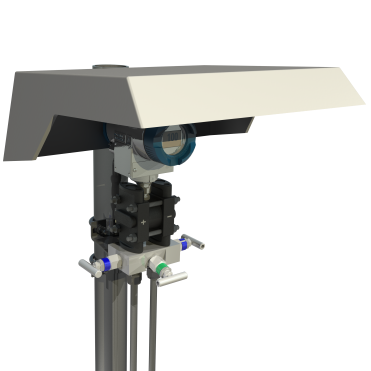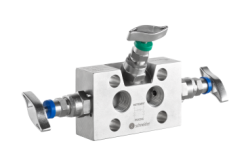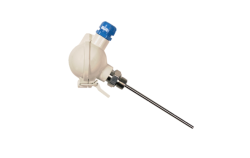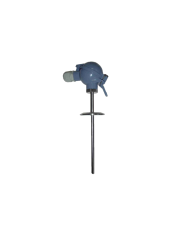To convert the pressure measurement in an output signal
Different types of pressure transmitters exist: differential pressure transmitter for measuring a pressure difference ΔP but also a relative or absolute pressure transmitter.
For more specific applications, it will be necessary to use:
- a differential pressure transmitter to correct variations of pressure and temperature of a gas
- two transmitters for the same differential pressure flow element to increase the measuring range
For more details on these cases, please see the Frequently Asked Questions tab on this page.
A differential pressure transmitter is a device that accurately measures a differential pressure (ΔP = upstream pressure - downstream pressure) and converts it into a 4-20mA output signal. The flow rate is calculated with the following formula :
, mass flow in kg/s
, constant
, differential pressure in mbar
, density of the fluid in kg/m3
If you do not find the answer you are looking for, please contact us either by phone at +33 (0)5.59.30.85.20 or via the contact form. We will respond as soon as possible.
The density ρ of an incompressible fluid is constant at a given temperature (a liquid can be considered at first sight as an incompressible fluid) whereas the density ρ of a compressible fluid (gas) varies according to its pressure and of its temperature. Thus, the choice of the transmitter can be provided as follows:
- For a liquid at constant temperature, provide a standard differential pressure transmitter.
- For a gas, at constant temperature and pressure, provide a standard differential pressure transmitter.
- For a gas at variable temperature and pressure, provide a multi-variable differential pressure transmitter. Indeed, it makes it possible to correct the pressure and temperature variations of the gas when it is coupled to a temperature sensor. This correction can also be obtained with a conventional differential pressure transmitter to which is added a temperature sensor, a pressure transmitter and a computer.
The rangeability of a DP flowmeter is the ratio between the maximal flow and the minimum measurable flow with low measurement uncertainty. Thus, the more the flowmeter has a high rangeability, the more it is able to accurately measure flows much lower than the maximum flow.
Deltafluid flowmeters have a rangeability of 1:6 meaning they keep a good accuracy for values of flow from 100 to 16% (Qmax:6) of the maximyum flow.
The coupling of two differential pressure transmitters to a single differential pressure flow measuring element allows to extend the rangeability (1:36 instead of 1: 6 in a conventional way) and to maintain a low measurement uncertainty over a range from 2 to 100% the max.
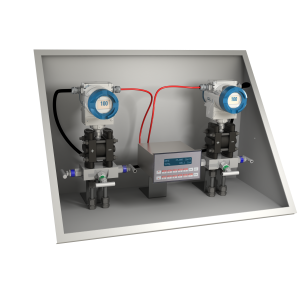
Two differential pressure transmitters in parrallel for a measure with a rangeability up to 1:36
